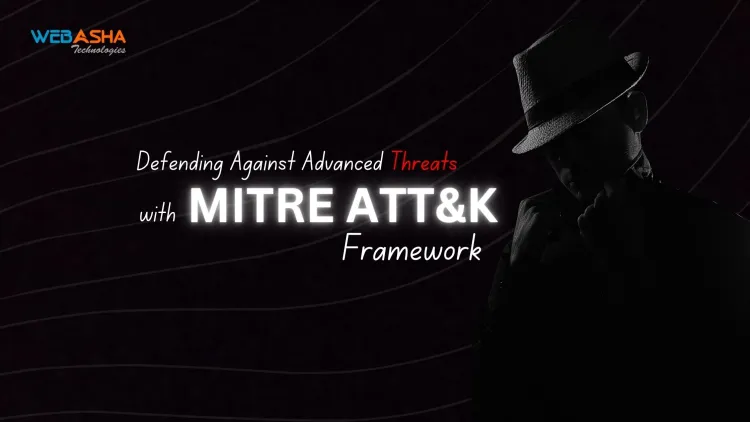Defending Against Advanced Threats with the MITRE ATT&CK Framework
Learn how to defend against advanced cyber threats using the MITRE ATT&CK Framework. Discover its structure, applications, and real-world impact in strengthening your organization's cybersecurity defenses.

2. Why is the MITRE ATT&CK Framework important for cybersecurity?
Answer: The framework offers a detailed understanding of how attackers operate, enabling organizations to enhance threat detection, improve incident response, and address security gaps. It’s particularly effective for combating advanced persistent threats (APTs).
3. What are the main components of the MITRE ATT&CK Framework?
Answer: The framework is structured into three main components:
a) Tactics: High-level goals adversaries aim to achieve (e.g., Initial Access, Persistence).
b) Techniques: Specific methods used to achieve those goals (e.g., phishing, credential dumping).
c) Procedures: Real-world examples of how these techniques are implemented.
4. How can organizations use the MITRE ATT&CK Framework for threat hunting?
Answer: By mapping known adversarial techniques to their environments, organizations can proactively search for indicators of compromise (IOCs) and uncover potential threats that may have bypassed traditional defenses.
5. Can the MITRE ATT&CK Framework be used for incident response?
Answer: Yes, during an incident, the framework helps teams map observed adversarial behaviors to specific techniques, enabling quicker identification of attack vectors and streamlining the remediation process.
6. What industries benefit most from the MITRE ATT&CK Framework?
Answer: While all industries can benefit, sectors such as finance, healthcare, government, and energy, which are frequently targeted by advanced threats, find the framework particularly valuable for improving their cybersecurity defenses.
7. Is the MITRE ATT&CK Framework updated regularly?
Answer: Yes, the framework is continuously updated by MITRE Corporation with contributions from the global cybersecurity community. This ensures that it remains relevant and reflects the latest adversarial tactics and techniques.
8. How does the MITRE ATT&CK Framework support red and blue team activities?
Answer: The MITRE ATT&CK Framework support red and blue team activitiesin the following ways:-
a) Red Teams: Use the framework to simulate adversarial tactics and test an organization’s defenses.
b) Blue Teams: Use it to understand potential attack vectors and improve detection and response capabilities.
9. What tools or platforms integrate with the MITRE ATT&CK Framework?
Answer: Many cybersecurity platforms and tools, such as SIEMs (Security Information and Event Management systems) and EDR (Endpoint Detection and Response) solutions, integrate with the MITRE ATT&CK Framework to provide automated mapping and threat analysis capabilities.
10. What are the limitations of the MITRE ATT&CK Framework?
Answer: While it is a powerful tool, its effectiveness relies on accurate and comprehensive threat intelligence. Smaller organizations with limited resources might find it challenging to implement fully. Additionally, it doesn’t provide direct solutions but requires skilled teams to interpret and act on its insights.












![Top 10 Ethical Hackers in the World [2025]](https://www.webasha.com/blog/uploads/images/202408/image_100x75_66c2f983c207b.webp)



![[2025] Top 100+ VAPT Interview Questions and Answers](https://www.webasha.com/blog/uploads/images/image_100x75_6512b1e4b64f7.jpg)







